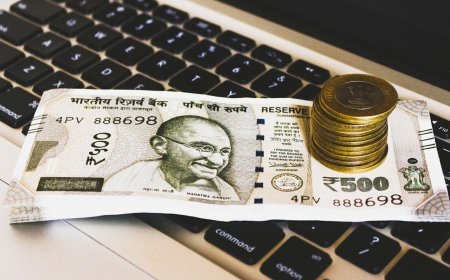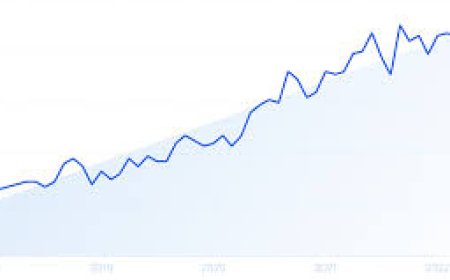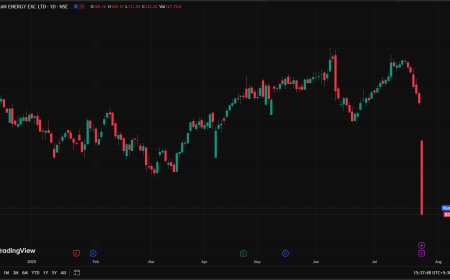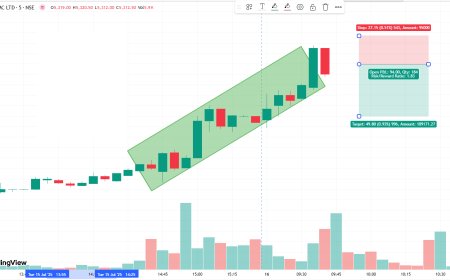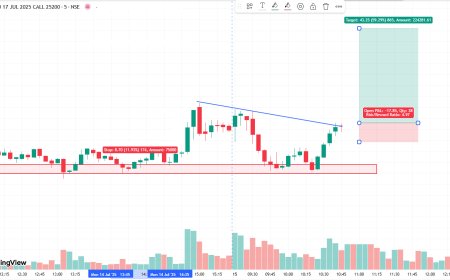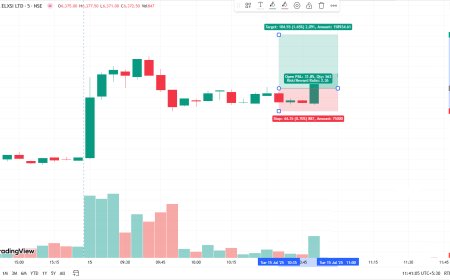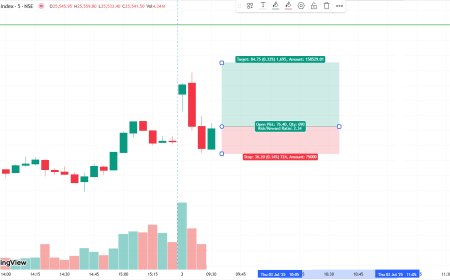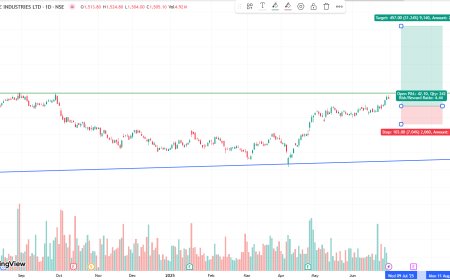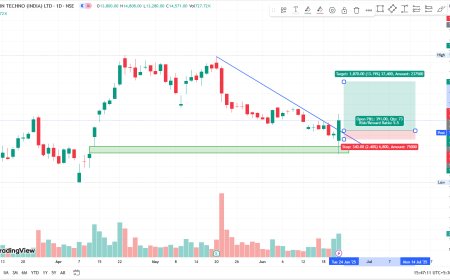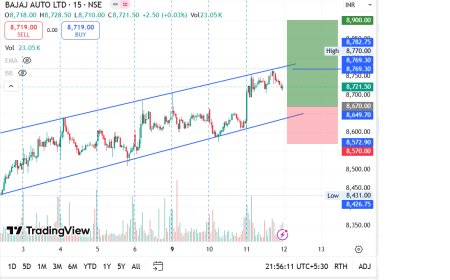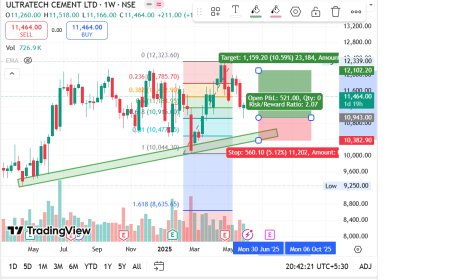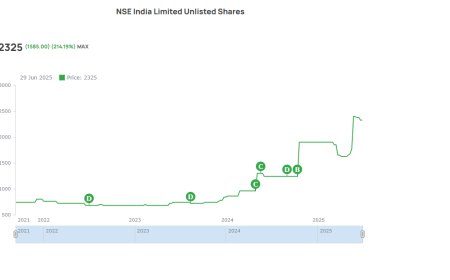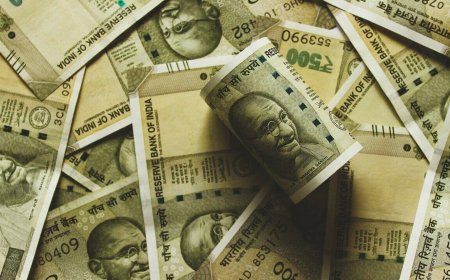China's Yuan Slips as Dollar Gains and PBOC Weakens Daily Fixing
The Chinese yuan edged lower against the US dollar as the greenback rallied and the PBOC set a weaker-than-expected daily midpoint, signaling policy flexibility amid growth concerns.

China's Yuan Edges Lower on Dollar Strength, Weaker Fixing
Shanghai | May 28, 2025
China’s currency, the yuan, softened against the US dollar in early Asian trading on Tuesday, reflecting growing pressure from a strengthening greenback and a weaker-than-expected official fixing by the People’s Bank of China (PBOC). The move comes amid global dollar gains, persistent capital outflows, and Beijing’s delicate balancing act between economic stimulus and exchange rate stability.
The onshore yuan (CNY) opened at 7.2380 per dollar and slipped to an intraday low of 7.2458, before closing around 7.2431, its weakest point in over a week. Meanwhile, the offshore yuan (CNH), which trades more freely, fell even further to 7.2573, amplifying concerns over currency pressure.
Weaker Fixing by PBOC Fuels Bearish Sentiment
The PBOC set the daily midpoint—the reference rate around which the yuan is allowed to trade in a 2% band—at 7.1108 per dollar, compared to Monday’s fixing of 7.1062. While marginal, this move signaled a willingness by the central bank to allow more depreciation in the yuan.
Interestingly, this fixing was also weaker than most market forecasts, which had anticipated a firmer hand by the central bank, especially after recent signals of currency support. The unexpected deviation led traders to reassess their short-term bets.
“The weaker fixing suggests that authorities are not actively defending the yuan at current levels, perhaps to support exports or allow market-driven adjustment amid domestic economic weakness,” said a Shanghai-based forex strategist.
Dollar Strength Amplifies Yuan Pressure
The yuan’s softness is being magnified by the persistent rise in the US Dollar Index (DXY), which gained 0.3% on the day to reach 105.70, buoyed by strong US economic data and renewed hawkish tones from the Federal Reserve.
With Fed officials signaling a delayed timeline for rate cuts, foreign exchange markets are pricing in higher-for-longer US rates, making dollar assets more attractive and putting emerging market currencies, including the yuan, under renewed pressure.
Moreover, rising US Treasury yields have pulled global capital back toward the United States, compounding outflows from Chinese markets.
Global Currencies Under Pressure
The yuan’s weakness mirrors a broader trend across emerging Asian currencies, many of which are grappling with dollar strength, geopolitical uncertainty, and diverging monetary policy paths.
Currencies like the Korean won, Thai baht, and Malaysian ringgit also lost ground today, reinforcing the narrative that China’s situation is part of a wider regional story.
That said, the yuan is especially vulnerable due to the unique policy and growth dynamics within China.
Policy Dilemma: Growth Support vs. Currency Stability
China’s policymakers are walking a tightrope between supporting a fragile economic recovery and avoiding excessive currency depreciation. Recent indicators suggest that the world's second-largest economy continues to face tepid domestic demand, sluggish real estate recovery, and low consumer confidence.
While the government has rolled out targeted fiscal and monetary easing measures, including RRR cuts and liquidity injections, markets remain wary that an overly loose stance could stoke capital flight or speculative currency bets.
“There’s a silent trade-off between growth and capital stability. The weaker fixing today could be a soft signal that the PBOC is leaning toward growth, even if it means tolerating some currency depreciation,” said a Beijing-based analyst.
Impact on Markets
The yuan’s slide weighed on Chinese equity markets, particularly those with high foreign exposure. The Shanghai Composite dropped 0.7%, while the Hang Seng China Enterprises Index fell 1.2%, reflecting caution among offshore investors.
At the same time, government bond yields eased slightly, suggesting increased demand for safer domestic assets amid currency market jitters.
Exporters Cheer, But Importers Worry
On the ground, China’s exporters stand to benefit from a weaker yuan, as it enhances price competitiveness in global markets. Sectors like electronics, textiles, and machinery may see improved margins if the trend persists.
However, for importers—particularly those reliant on raw materials and commodities—a weaker yuan increases input costs. The net effect may be inflationary in select segments, especially if energy and grain prices continue to rise globally.
What’s Next for the Yuan?
Analysts remain divided on the near-term outlook for the yuan. While some expect gradual depreciation toward the 7.30–7.35 band, others believe the PBOC may step in with verbal or operational intervention if speculative forces take hold.
Key drivers to watch:
-
Upcoming US PCE inflation data
-
China’s PMI numbers for May
-
Geopolitical tensions, especially in the South China Sea and cross-strait relations
-
Capital flow reports from SAFE (State Administration of Foreign Exchange)
In the options market, 1-month USD/CNY risk reversals continue to show bias toward yuan weakness, indicating hedging activity among corporates and investors.
Historical Context
The yuan has seen considerable volatility in the past two years. From sub-6.40 levels in early 2022, it has depreciated significantly due to:
-
Interest rate divergence between China and the US
-
Economic slowdown post-COVID reopening
-
Geopolitical de-risking by global investors
-
Weaker trade surpluses and outbound tourism demand for foreign exchange
Despite these pressures, the PBOC has kept broad control over the currency using its fixing mechanism, capital controls, and state-owned bank interventions.
Long-Term Implications
If the yuan continues to depreciate in an orderly manner, it could act as a natural economic stabilizer by:
-
Supporting exports
-
Enhancing domestic liquidity
-
Providing monetary flexibility amid deflationary forces
However, if depreciation accelerates or becomes speculative, it could erode investor confidence, prompt capital flight, and force Beijing into emergency intervention—something the leadership has sought to avoid.
Foreign portfolio inflows into Chinese bonds and equities remain tepid, underscoring concerns over return predictability and currency risk.
Expert Commentary
James Ho, FX strategist at HSBC Hong Kong, said:
“The yuan's path from here depends on whether the PBOC prioritizes growth or macro stability. For now, they appear willing to tolerate gradual depreciation—but not a free fall. The messaging will come through in the fixings.”
Li Xue, Senior Economist at Nomura Beijing, added:
“China needs the yuan to remain competitive but not volatile. A weaker yuan is acceptable as long as capital controls hold and inflation stays low.”
China's yuan slipping in response to both dollar strength and a softer PBOC fixing reflects the evolving landscape of global currency markets. As the US maintains its hawkish stance and Chinese economic recovery remains patchy, the yuan finds itself under a slow grind downward.
The broader narrative is not just about currency levels but about macro strategy, capital confidence, and international signaling. With every fixing and basis point movement, Beijing is shaping how the world views its financial resilience.
For now, the message is clear: flexibility is in, but control remains paramount.
What's Your Reaction?
 Like
0
Like
0
 Dislike
0
Dislike
0
 Love
0
Love
0
 Funny
0
Funny
0
 Angry
0
Angry
0
 Sad
0
Sad
0
 Wow
0
Wow
0





















